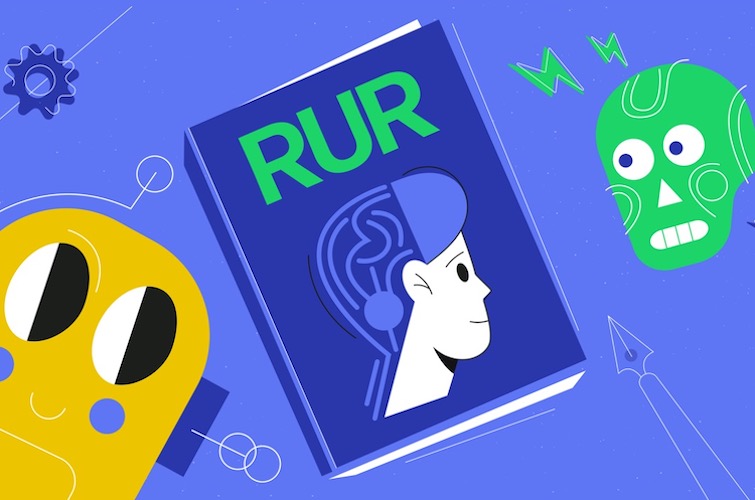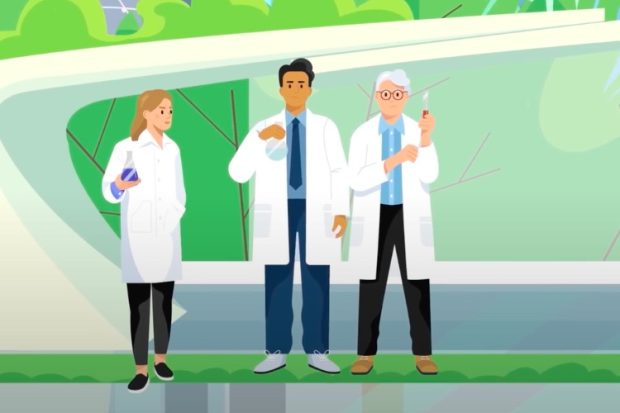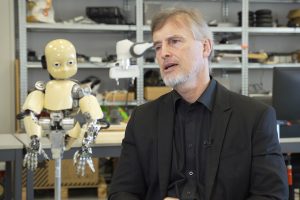Kid’s Creative Thinking
Professor Mitchel Resnick on the kindergarten style of education, creative learning spiral, and challenges of ...

With a courteous permission of our russian colleagues from online-magazine on contemporary science “PostNauka” we publish an interview with Professor of The Robotics Institute at Carnegie Mellon University Mel Siegel.
What is the definition of a “robot”?
There are many definitions of a “robot”. The classical definition among my colleagues is “a robot is a machine that senses, thinks, and acts”. For about 10 years I personally have added “communicates” to these three – recently other people have also been saying “…senses, thinks, acts, and communicates”. But for better or for worse, this definition makes most modern household appliances – clothes washing machines, etc – robots. Perhaps, a good solution to this problem is to prepend suitable adjectives: mobile robot, humanoid robot, agricultural robot, bomb-disposal robot, etc; I think people naturally understand these with very little ambiguity, which is perhaps the best definition of a good definition.
So, you don’t consider washing machine to be a robot? Why? Where is the edge between “real” robots and many kinds of machines?
Actually, over the years I have changed my mind about this. When I began doing robotics in the 1980s, we could see the promise – but not yet the reality – of “smart appliances” that would “sense, think, and act”, and we/I did often say that a “smart washing machine” would meet the definition of a robot. More recently, now that we really do have many smart appliances and we have many different kinds of machines that are without doubt robots, I personally have come to believe it is more useful to apply a narrower definition – otherwise pretty soon everything that has a microprocessor in it – and soon that will be (almost) everything – will be a robot. Then the word “robot” will have become (almost) meaningless, (almost) synonymous with “man-made thing”. So I have come to believe that the interactive aspect – the “communicate” that I added to “sense, think, act” – is an essential feature of a machine that it is useful to call a robot. In this context maybe even better than “communicate” would be a word like “negotiate”: there has to be the possibility of a productive back-and-forth interaction between man and machine the outcome of which is that the job will be done better than either the man alone or the machine alone would have done it – then I will be completely comfortable calling it a robot.
When was the first robot invented?
Probably, you know that robots were imagined long before the first functional robots were built. For example, the 16th century “Golem of Prague”, and the early 20th century play “RUR” (Rosumovi Univerzální Roboti) by Karel Čapek. There is also a long history of dolls or puppets that pretend to be robots, but really aren’t: I call them “cuckoo clock robots”. The Unimate is generally recognized as the first industrial robot; it went into service in a General Motors automobile part production plant in 1961.
On what stage is the development of robotics right now?

I think a lot about how to answer this question! Here is the best I can do. I imagine a straight line that joins a point that represents in some general sense the capability of the best robot and a point that represents in some general sense the capability of an ordinary human like me. Now I ask: “Where would a point that represents the capability of my dog Bella fall on that line?” I would say the distance between the robot and me is at least 20 times the distance between Bella and me – that is, Bella is a far better “sense, think, act, communicate” machine than is the best robot – in a general sense. But the phrase “in a general sense” is very important! If instead we consider a specialized task that a special-purpose robot is built and programmed to do, then the robot can be far more capable than a human trying to do the same job – for example, applying an adhesive bead that will seal an automobile windshield in place, a job that a robot can do much more rapidly and much more precisely than a human worker can.
When and where do you personally see the roots of robotics researches?
The roots of robotics research are in two places: hard automation (the assembly-line machines that do repetitive tasks at high speed with high precision) and artificial intelligence (the goal of computer scientists to design computers and computer programs that have “common sense”). The first is the “act” part of the “sense, think, act, communicate” paradigm; the second is the “think” part. The “communicate” part is already quite well developed in practice, and the “sense” part is already well developed in principle, though doing as much sensing as we would like, using devices as small and as cheap as we would like is still a fairly distant goal, as is real-time processing all the data that would be generated by all the sensors we would like to have.
What are the main research areas in robotics?
This question reminds me of the story of the seven blind men who were asked to describe an elephant: one felt the tail and said “and elephant is like a rope”, another felt the side and said “an elephant is like a wall”, another felt a leg and said “an elephant is like a tree”, and so on. Robotics is everywhere, and anywhere is a main research area for somebody! At the moment two very “hot” areas are unmanned aerial vehicles, often called “drones”, and unmanned land vehicles, often called “driverless cars”, both of which still require enormous amounts of research before they will really be ready for fully autonomous operation. Both of them are encompassed by the general area of human-robot interaction (or collaboration), which in fact encompasses almost every imaginable application area for robots.

Professor Mitchel Resnick on the kindergarten style of education, creative learning spiral, and challenges of ...

AI specialist Jürgen Schmidhuber on inductive inference, universal Solomonoff prior and measuring probability ...

Physicist Hoi-Kwong Lo on quantum key distribution, "flying qubits", and quantum hacking